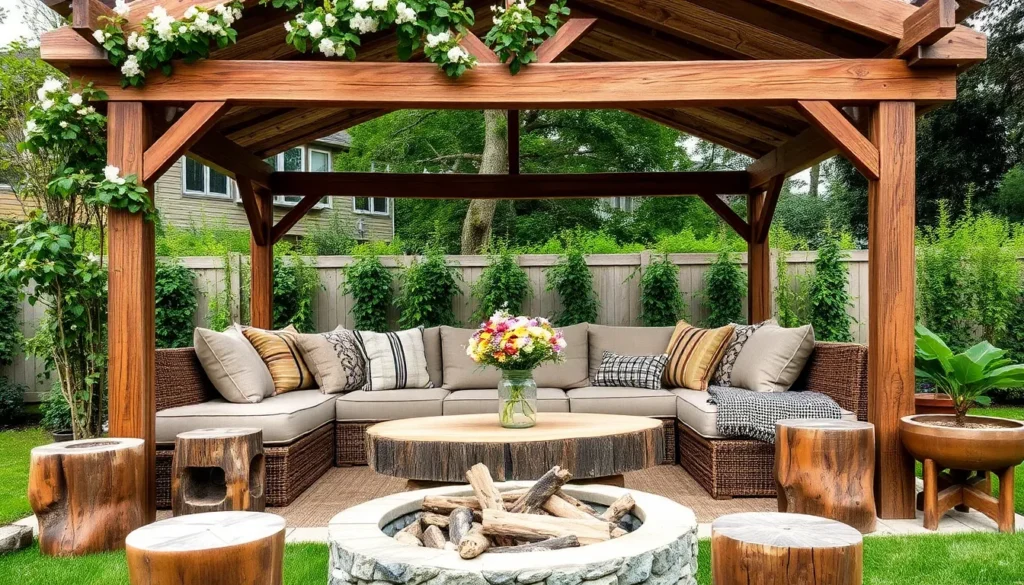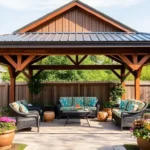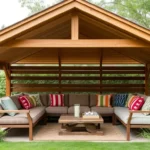Welcome to the charming world of DIY rustic shelters, where your backyard can transform into a cozy retreat that beckons with the promise of comfort and style. Whether you’re an enthusiastic beginner or a seasoned outdoor enthusiast, crafting your own rustic haven allows you to blend creativity with functionality, creating a personalized space that reflects your unique taste. This article will guide you through the essentials of building your own rustic shelter, turning your backyard into an enchanting escape.
In the following pages, you’ll discover practical tips and inspiring ideas to get started, from selecting the right materials to incorporating rustic design elements that harmonize with nature. We’ll explore various styles and techniques, ensuring that your project is both achievable and enjoyable, regardless of your experience level. Together, let’s embark on this rewarding journey to enhance your outdoor living experience, one cozy corner at a time.
Choosing the Perfect Rustic Design

When choosing the perfect rustic design for your DIY outdoor shelter, start by focusing on natural materials like wood and stone, which blend seamlessly with the environment. Opt for weather-resistant woods like cedar or redwood to ensure longevity, and consider including elements like exposed beams or a simple stone foundation for an authentic rustic feel. Beginners can start with a basic structure like a pergola, while those with more experience might try adding a stone fireplace or a reclaimed wood roof for added character.
To further enhance your rustic shelter, incorporate design elements such as rough-hewn timber and earthy tones that echo the surrounding landscape. Use materials like corrugated metal for roofing, which adds a rustic touch and is easy to install. For a cozy atmosphere, add functional details such as built-in benches or lantern-style lighting. Remember, the key to a successful rustic design is balancing simplicity with functionality, ensuring your shelter is both inviting and practical for use year-round.
Gathering Essential Building Materials

When building a rustic outdoor shelter, gathering the right materials is crucial. Begin with sourcing durable wood like cedar or redwood, which are naturally resistant to rot and insects, ensuring longevity. For the roof, consider a mix of reclaimed materials such as old tin sheets or wooden shingles to enhance the rustic appeal. Using locally sourced stone for foundations or accents can add stability and an authentic touch. These materials not only blend seamlessly into a natural setting but also require minimal maintenance.
For a cozy yet functional design, think about incorporating elements like large wooden beams for a sturdy framework, and thicker logs or branches for walls, which provide both support and an appealing aesthetic. Ensure you have basic tools like a saw, hammer, and drill, and advanced builders might benefit from a miter saw for precise cuts. Consider adding rustic hinges and handles if you plan to include doors or windows, which are small details that make a big impact. By carefully selecting your materials and tools, you can create a shelter that is both inviting and robust.
Step-by-Step Shelter Construction Guide

Begin by selecting a suitable location in your backyard that offers both stability and an appealing view. Ensure the ground is level and firm to provide a solid base for your rustic shelter. Choose weather-resistant materials like cedar or redwood for the frame, as these woods are durable and naturally resistant to decay. For beginners, starting with a simple A-frame design is advisable, as it requires fewer cuts and connections. Assemble the frame using galvanized screws to enhance the structure’s longevity.
Incorporate design elements that enhance both function and charm. Consider adding a slanted roof made of corrugated metal or reclaimed wood for a rustic touch that also efficiently sheds rainwater. For those with advanced skills, integrating sliding barn doors can add a stylish, practical entryway.
- Ensure the shelter is anchored securely to prevent wind damage.
- Use outdoor-rated paints or stains to protect the materials from the elements.
With these steps, you’ll create a cozy, durable space that invites relaxation and enjoyment throughout the seasons.
Incorporating Cozy Decorative Elements
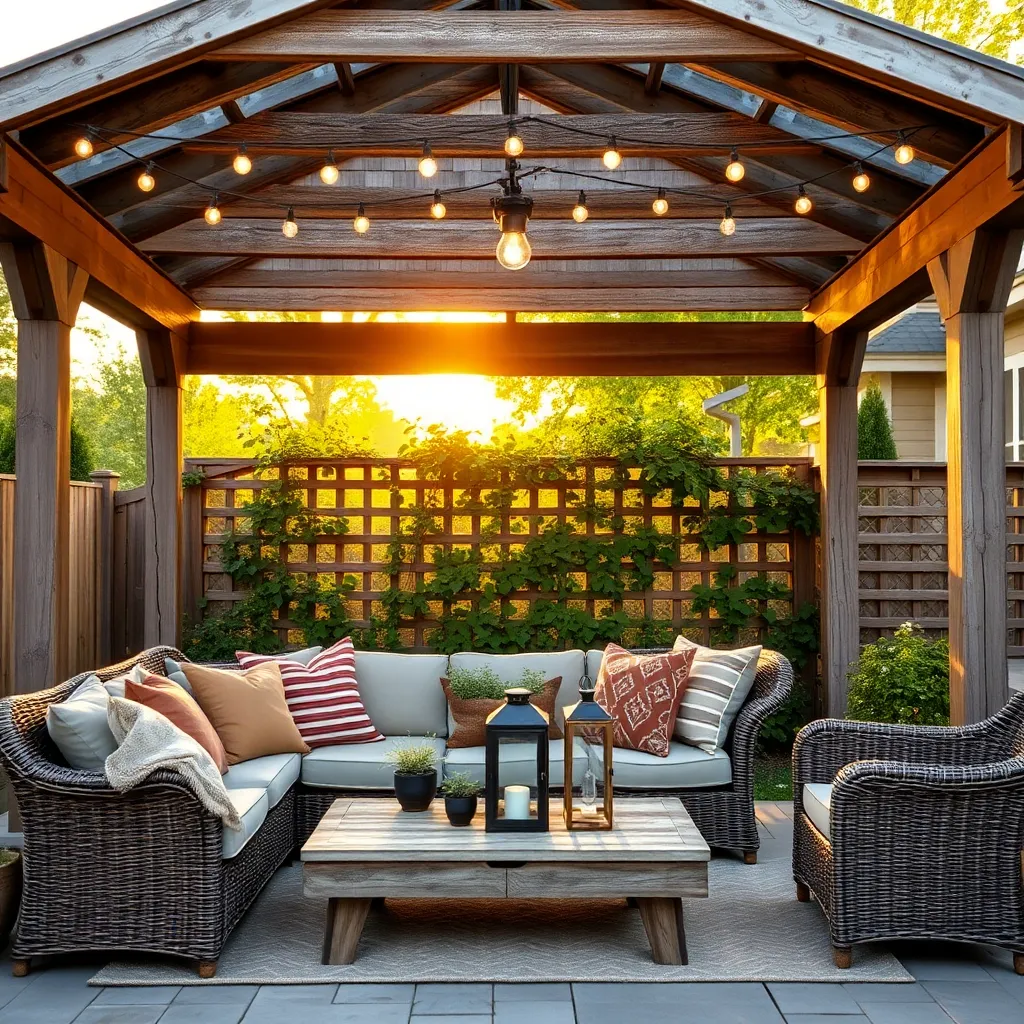
Adding cozy decorative elements to your rustic shelter can significantly enhance its charm and functionality. Consider incorporating **soft textiles** like weather-resistant cushions and throws, which not only provide comfort but also add warmth to the space. **String lights** or **lanterns** are excellent for creating a welcoming ambiance, especially during evenings. Opt for solar-powered options to reduce energy use while maintaining an eco-friendly approach.
For a more personalized touch, introduce **natural materials** such as wooden signs or stone planters that complement the rustic theme. Using **reclaimed wood** for shelves or accent pieces can add character and sustainability to your design. If you’re feeling creative, try your hand at DIY projects like crafting a **live edge table** or a **pallet coffee table**, which can serve as striking focal points. Remember to adhere to a cohesive color palette to ensure all elements blend seamlessly with the natural surroundings.
Maintaining Your Rustic Backyard Haven
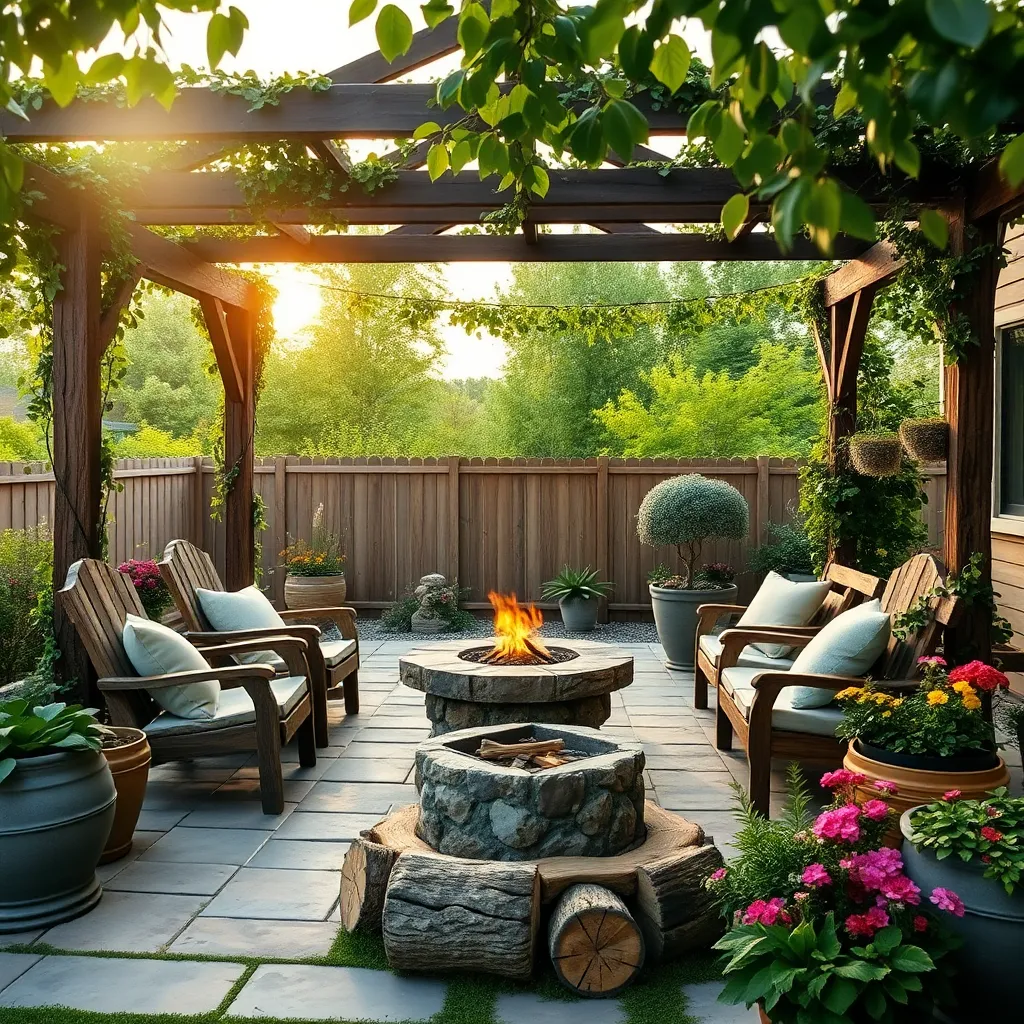
Maintaining your rustic backyard haven involves regular upkeep to ensure its charm and functionality remain intact. Start by inspecting the structure for any signs of wear or damage, especially focusing on wooden elements. Regularly applying a weather-resistant sealant can protect wood from moisture and UV damage, keeping the rustic aesthetic intact. For metal components, use rust-resistant paint to prevent corrosion. These simple steps can greatly extend the life of your shelter.
Consider enhancing your shelter’s durability and appeal with thoughtful design choices. Incorporate natural materials like stone or reclaimed wood to blend seamlessly with your garden. Add a layer of gravel or pavers around the perimeter to improve drainage and reduce mud. For a cozy touch, include weatherproof textiles and solar-powered lights to create an inviting atmosphere. These enhancements not only beautify your space but also make it more functional and enjoyable year-round.
Conclusion: Creating Beautiful Outdoor Spaces
In exploring the world of DIY rustic shelters for your backyard, we’ve uncovered five key relationship concepts: the importance of collaboration in planning, the joy of shared creativity, the value of quality time spent together, the significance of building something tangible as a team, and the power of creating personal spaces that inspire connection. These concepts not only enhance your backyard but can also strengthen your bond, making your relationship more resilient and fulfilling.
As a next step, why not set aside an afternoon this weekend to brainstorm ideas or start gathering materials for your rustic shelter project? This hands-on activity is an invitation to communicate, cooperate, and celebrate your partnership.
Don’t forget to save or bookmark this article for future reference. It will be a handy guide as you embark on this enriching journey together. By embracing these principles, you’re not only crafting a cozy retreat but also laying the foundation for a thriving relationship. Remember, the seeds you plant today in your backyard and your relationship will grow into something truly beautiful, nurturing love and connection for years to come.

